Reviews
Sam Peckinpah
USA, 1971
Credits
Review by Rumsey Taylor
Posted on 18 July 2009
Source The Criterion Collection DVD
Categories Favorites: The Action Movie
Sam Peckinpah’s Straw Dogs makes the powerful suggestion that violence is inherently male, that despite the apparent placidity in its central character his capacity for violence is large and available. It is an alarming thought, and is addressed in a film that uses violence as a transcendent device rather than as exploitation.
We are introduced to David Sumner, an American math professor on sabbatical, living temporarily with his wife, Amy, in her English hometown. It is a humble, poor location that mars noticeably against his financial and intellectual wealth. David is an outcast in an exceedingly discriminating location. He enters a local pub to purchase American cigarettes, and the staging and editing relay the tense confrontation; every eye fixed upon him distils the rheum of palpable contempt, and Peckinpah’s static compositions find each in a concentrated surge of edits.
Straw Dogs is a decidedly masculine film in which sexual roles are clearly identified, even caricatured, and the penetrating male gaze is assumed in the camerawork. Amy is introduced in a clearly suggestive shot that pans upward from her exposed legs and rests on her chest. She is braless underneath her sweater — a notion emblematic of individual freedom in 60s ideological vocabulary that contributes to her marital dissatisfaction.
Both the male and female characters are caricatured for the benefit of forwarding the sexual conflict of the film. Women are objectified and functionally attractive; men, conversely, are violent, competitive, and in perpetual conflict with one another. This conflict is at end within the Sumner’s marriage, however. David is not intellectually gratified. His wife is a trophy that bears little use. The townsmen continually glare at her, in actions that subordinate David’s protective role in their relationship. Because he is not attracted to his wife in his terms, any impulse to confront Amy’s oglers is slight.
In the film’s most subversively violent scene, Amy is raped by one of the men hired to renovate their garage (he is a past fling). The scene displays, secondly, Peckinpah’s technical brilliance. David is out hunting, and his first killing of the targeted fowl is, in editing, associated with the climax of Amy’s rapist (both acts are psychologically corruptive). Obviously, this is a suggestion of a relationship between sex and violence, or more particularly the gratification derived by each party in separate although suggestively related forms: David’s score satiates his hidden thirst for violence, and Amy’s rape gratifies her unfulfilled sexual desire in her marriage.
The conflict between both the Sumners in their marriage and with the townsfolk escalates throughout the film. The intense, violent pitch of the film affirms in its final thirty minutes in a scene that involves the siege of the Sumner’s house and David’s attempt to defend it. It is a scene in which every player resorts to primal impulse and desperation. David turns to violence upon provocation, as a means of defense. It is not a transformative gesture, however, for it is implied that David’s capacity for violence is innate. His action — his killing — is even cathartic. For most of the film David is distant and unaffected. In the final minutes a smile breaks his glazed countenance, one he cannot stifle.
Stephen Prince suggests, in his commentary for the film, that David is the film’s villain; that his actions are meant to be detested and not sympathized. It is a radical, if not forced suggestion, although it is entirely apt. Straw Dogs is controversial if David is extolled, and legitimate if he is discriminated against. It is a dilemmatic circumstance, as the discrimination that founds the conflict between David and the townsmen may occur between the viewer and the film, in result of its final act.
This thought is hindered, as the film’s violence is clearly aestheticized. Peckinpah makes generous use of slow-motion inserts into complex montages. A death late in the film, even, is laudable for its creative plot use. In this manner, Straw Dogs encourages controversy; it is designed to do so. It is an identification of a director whose masochism is a distinguishing trait. Its characters and their impulses are artificial, yet the conflict and impulses married to them are entirely humanistic.
More Favorites: The Action Movie
-

First Blood
1982 -
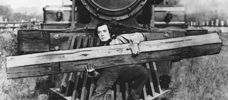
The General
1926 -

The Running Man
1987 -

Guns
1990 -

Highlander
1986 -
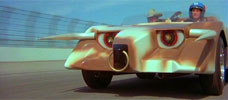
Death Race 2000
1975 -
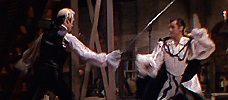
Scaramouche
1952 -
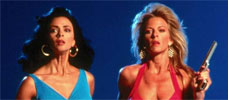
Do or Die
1991 -
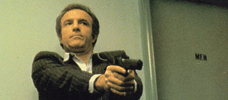
Thief
1981 -

Mission: Impossible
1996 -
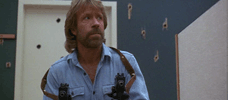
Invasion U.S.A.
1985 -

Rambo: First Blood Part II
1985 -

Bullitt
1968 -

Hard Hunted
1992 -

The Fugitive
1993 -
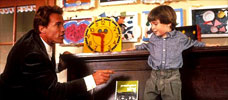
Kindergarten Cop
1990 -
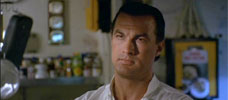
Under Siege
1992 -
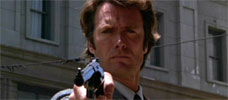
Dirty Harry
1971 -
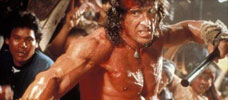
Rambo III
1988 -
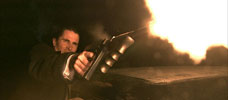
Public Enemies
2009 -
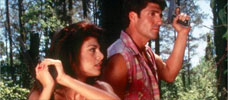
Day of the Warrior
1996 -

The Good, the Bad, the Weird
2008 -
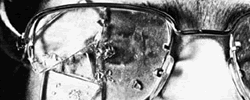
Straw Dogs
1971 -
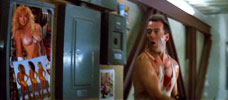
Die Hard
1988 -
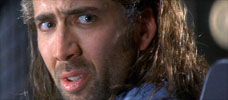
Con Air
1997 -

Collateral Damage
2002 -
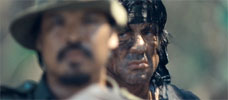
Rambo
2008
We don’t do comments anymore, but you may contact us here or find us on Twitter or Facebook.



